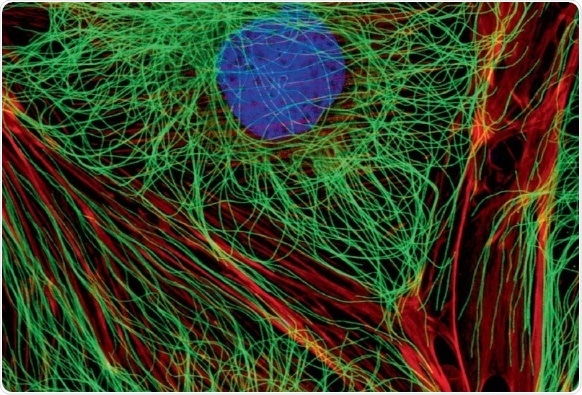Olympus delivers a breakthrough to life science microscopy with the launch of its next-generation X Line objectives. Ultra-thin lenses manufactured by a revolutionary polishing technique enable the objectives to simultaneously boost numerical aperture, flatness and chromatic correction – providing exceptional image quality for researchers and clinicians alike.

As a leader in optics for 100 years, Olympus has broken down barriers to imaging quality with the launch of its next-generation objectives. The breakthrough polishing technique enables the company to produce ultra-thin lenses that overcome the traditional trade-off between numerical aperture (NA), flatness and chromatic correction – enabling all three parameters to be significantly improved.
Olympus has harnessed this proprietary technology to deliver high-performance X Line objectives for clinical and research applications as well as UPLAPO-HR objectives, the world’s first plan-corrected apochromat objectives with a NA of 1.5 for total internal reflection fluorescence (TIRF) microscopy and super resolution applications. The new objectives will deliver significant improvements to a plethora of research and clinical applications without the need to change or upgrade imaging systems.
X Line: expanded, exceptional, excellent
Traditional lenses force manufacturers to choose to optimize either image flatness or chromic aberration or the NA, which contributes to bright and high-resolution images. Olympus’ X Line objectives negate this trade-off – delivering market-leading image quality where each of these three pillars of quality is as solid as the others. The resulting high and uniform image quality across the entire field of view (FOV) benefits accurate diagnoses, large FOV imaging, multicolor imaging, image stitching and quantitative image analysis.

The quality of objectives rests mainly on three pillars: numerical aperture, chromatic aberration correction and flatness.
NA describes a lens’s ability to capture light, meaning that high-NA lenses yield higher resolution and require shorter exposure times, minimizing phototoxicity. The ultra-thin lenses at the core of X Line objectives produce NAs up to 1.45 – a value normally found only in specialized objectives.
X Line objectives are able to combine these high NAs with a market-leading chromatic aberration correction range of 400–1000 nm and excellent image flatness. Chromatic correction prevents wavelength-dependent shifting of colors along the X, Y and Z axis, enabling color accuracy, high-precision multicolor colocalization and measurement. Image flatness ensures that the whole field of view is in focus – benefiting all users, but in particular those that use image stitching and quantitative image analysis.
Users of both high-end and low-end microscopy systems can easily boost the image quality of their microscopy system by switching to X Line. Ensuring broad compatibility with different systems, X Line objectives provide these benefits without changing the mount or parfocalizing distance, making it easy to upgrade this easily overlooked part of a microscope.
Some might say that it’s just a lens, but objectives really lie at the heart of every microscope, determining the quality of the complete imaging system and the accuracy of any downstream data analysis. If your raw image isn’t great, you can post-process as much as you want, but you’ll never reach the quality of high-performance objectives. With this new range of objectives, Olympus not only improves raw image quality, but also helps to acquire more meaningful data, delivering enormous benefits to every microscope user.”
Jan Barghaan, marketing manager at Olympus Europa
Breaking barriers in TIRF and super resolution
As a pioneer in TIRF microscopy, Olympus has also applied its unique lens manufacturing technique to the design of specialized lenses, optimized for TIRF microscopy and super resolution applications. These UPLAPO-HR objectives are the only plan-corrected apochromat objectives on the market with a NA of 1.5. This combination creates bright, high-resolution images that also have the high flatness essential for TIRF and super resolution applications – providing high-quality imaging as well as reliable data for accurate calculations.
Catch a first glimpse at ELMI
The newly launched X Line and UPLAPO-HR objectives will be exhibited at the European Light Microscopy Initiative’s annual meeting in Brno, Czech Republic, from 4 to 7 June, where visitors will also have to opportunity to attend Olympus’ workshops on cutting-edge microscopy applications. These include deep learning and live-cell confocal super resolution imaging. Olympus can be found at booth 6 and at workshop room S2.